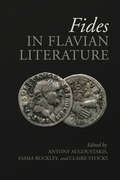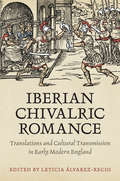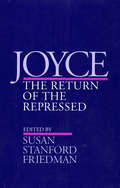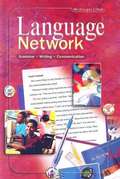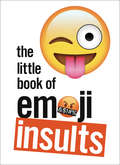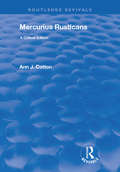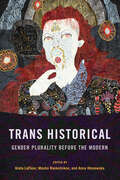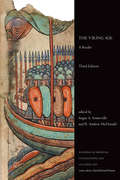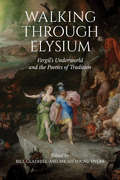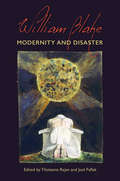- Table View
- List View
Fides in Flavian Literature (Phoenix Supplementary Volumes #56)
Fides in Flavian Literature explores the ideology of "good faith" (fides) during the time of the emperors Vespasian, Titus, and Domitian (69–96 CE), the new imperial dynasty that gained power in the wake of the civil wars of the period. The contributors to this volume consider the significance and semantic range of this Roman value in works that deal in myth, contemporary poetry, and history in both prose and verse. Though it does not claim to offer the comprehensive "last word" on fides in Flavian Rome, the book aims to show that fides in this period was subjected to a particularly striking and special brand of contestation and reconceptualization, used to interrogate the broad cultural changes and anxieties of the Flavian period as well as connect to a republican and imperial past. The editors argue that fides was both a vehicle for reconciliation and a means to test the nature of "good faith" in the wake of a devastating and divisive period in Roman history.
Iberian Chivalric Romance: Translations and Cultural Transmission in Early Modern England (Toronto Iberic)
This collection of essays analyses the publication and reception history of sixteenth-century Iberian books of chivalry in English translation in early modern England. A comprehensive introduction explains the subject, its importance for the study of early modern fiction writing in general, and the state of Anglo-Spanish literary relations at the time. Various contributors consider the impact of the Iberian chivalric writing on other contemporary genres, such as native English romance, letter-writing, and chronicle, and explore the influence of translations in English prose fiction from the 1590s up to the mid-seventeenth century. The volume delves into Anthony Munday’s role in the literary book market, approaching some of his most representative translations – Amadis, Palmendos, Primaleon of Greece, and Palmerin of England – and examining the contribution of these works to early modern cultural debates on sexuality, marriage, female individualism, colonialism, and religious controversy.
Joyce: The Return of the Repressed
Did James Joyce, that icon of modernity, spearhead the dismantling of the Cartesian subject? Or was he a supreme example of a modern man forever divided and never fully known to himself? This volume reads the dialogue of contradictory cultural voices in Joyce’s works—revolutionary and reactionary, critical and subject to critique, marginal and central. It includes ten essays that identify repressed elements in Joyce’s writings and examine how psychic and cultural repressions persistently surface in his texts. Contributors include Joseph A. Boone, Marilyn L. Brownstein, Jay Clayton, Laura Doyle, Susan Stanford Friedman, Christine Froula, Ellen Carol Jones, Alberto Moreirias, Richard Pearce, and Robert Spoo.
The Little Book of Emoji Insults
If you can't say something nice... say it in emoji.Shock your friends and family with this brilliantly offensive collection of emoji put-downs and comebacks.With this handy guide, the endless potential for a punishing emoji burn will be opened to you like never before – far beyond just relying on the classic middle finger symbol. From everyday insults to brutal Shakespearean zingers, classic movie put-downs to the best ‘your mum’ jokes, this is your complete phrasebook for the ever more savage world of emoji insults.
Mercurius Rusticans: A Critical Edition (Routledge Revivals)
Published in 1988: Mercurius Rusticans is one in a long series of academic plays, generally in Latin, but occasionally in English, which were performed at the colleges of Oxford and Cambridge, during the sixteenth and seventeenth centuries.
Teaching Comedy (Options for Teaching)
From Shakespeare to The Simpsons, comedy has long provided both entertainment and social commentary. It may critique cultural values, undermine authority, satirize sacred beliefs, and make room for the marginalized to approach the center. Comedy can be challenging to teach, but in the classroom it can help students connect with one another, develop critical thinking skills, and engage with important issues.The essays in this volume address a rich variety of texts spanning film, television, stand-up, cartoons, and memes as well as conventional literary works from different places and times. Contributors offer theoretical foundations and practical methods for a broad range of courses, including guidance on contextualizing the humor of historical works and on navigating the ways that comedy can both subvert and reinforce stereotypes. Finally, the volume argues for the value of comedy in difficult times, as a way to create community and meaning.This volume contains discussion of fiction, poetry, plays, and essays by Maya Angelou, Jane Austen, Aphra Behn, Hugh Henry Brackenridge, Frances Burney, Charles W. Chesnutt, Roddy Doyle, Maria Edgeworth, Ben Jonson, Anita Loos, Emtithal Mahmoud, Thomas Middleton, Okot p'Bitek, William Shakespeare, Laurence Sterne, Jonathan Swift, Alma Villanueva, Paula Vogel, Oscar Wilde, John Wilmot, and William Wycherley; TV shows and films including Crazy Ex-Girlfriend, The Gold Rush, Life Is Beautiful, The Marvelous Mrs. Maisel, The Office, Office Space, Rick and Morty, and South Park; works and stand-up performances by Aziz Ansari, Samantha Bee, Dave Chappelle, Louis C.K., Tina Fey, Moms Mabley, Hasan Minhaj, Eddie Murphy, Trevor Noah, Richard Pryor, Issa Rae, and Wanda Sykes; and visual works and other media including Aaron McGruder's The Boondocks, Bill Watterson's Calvin and Hobbes, Nick Sousanis's Unflattening, Marvel's Hawkeye, The Onion, YouTube videos, advertisements, and memes.
Trans Historical: Gender Plurality before the Modern
Trans Historical explores the plurality of gender experiences that flourished before the modern era, from Late Antiquity to the eighteenth century, across a broad geographic range, from Spain to Poland and Byzantium to Boston. Refuting arguments that transgender people, experiences, and identities were non-existent or even impossible prior to the twentieth century, this volume focuses on archives—literary texts, trial transcripts, documents, and artifacts—that denaturalize gender as a category. The volume historicizes the many different social lives of sexual differentiation, exploring what gender might have been before modern medicine, the anatomical sciences, and the sedimentation of gender difference into its putatively binary form.The volume's multidisciplinary group of contributors consider how individuals, communities, and states understood and enacted gender as a social experience distinct from the assignment of sex at birth. Alongside historical questions about the meaning of sexual differentiation, Trans Historical also offers a series of diverse meditations on how scholars of the medieval and early modern periods might approach gender nonconformity before the nineteenth-century emergence of the norm and the normal. Contributors: Abdulhamit Arvas, University of Pennsylvania; Roland Betancourt, University of California, Irvine; M. W. Bychowski, Case Western Reserve University; Emma Campbell, Warwick University; Igor H. de Souza, Yale University; Leah DeVun, Rutgers University; Micah James Goodrich, University of Connecticut; Alexa Alice Joubin, George Washington University; Anna Kłosowska; Greta LaFleur; Scott Larson, University of Michigan, Ann Arbor; Kathleen Perry Long, Cornell University; Robert Mills, University College London; Masha Raskolnikov; Zrinka Stahuljak, UCLA.
The Viking Age: A Reader, Third Edition (Readings in Medieval Civilizations and Cultures)
In this extensively revised third edition of The Viking Age: A Reader, Somerville and McDonald successfully bring the Vikings and their world to life for twenty-first-century students and instructors. The diversity of the Viking era is revealed through the remarkable range and variety of sources presented as well as the geographical and chronological coverage of the readings. The third edition has been reorganized into fifteen chapters. Many new sources have been added, including material on gender and warrior women, and a completely new final chapter traces the continuing cultural influence of the Vikings to the present day. into the twenty-first century. The use of visual material has been expanded significantly, and updated maps illustrate historical developments throughout the Viking Age. The NorseEnglish translations of Norse texts, many of them new to this collection, are straightforward and easily accessible, while chapter introductions contextualize the readings.
Walking through Elysium: Vergil’s Underworld and the Poetics of Tradition (Phoenix Supplementary Volumes)
Walking through Elysium stresses the subtle and intricate ways writers across time and space wove Vergil’s underworld in Aeneid 6 into their works. These allusions operate on many levels, from the literary and political to the religious and spiritual. Aeneid 6 reshaped prior philosophical, religious, and poetic traditions of underworld descents, while offering a universalizing account of the spiritual that could accommodate prior as well as emerging religious and philosophical systems. Vergil’s underworld became an archetype, a model flexible enough to be employed across genres, and periods, and among differing cultural and religious contexts. The essays in this volume speak to Vergil’s incorporation of and influence on literary representations of underworlds, souls, afterlives, prophecies, journeys, and spaces, from sacred and profane to wild and civilized, tracing the impact of Vergil’s underworld on authors such as Ovid, Seneca, Statius, Augustine, and Shelley, from Pagan and Christian traditions through Romantic and Spiritualist readings. Walking through Elysium asserts the deep and lasting influence of Vergil’s underworld from the moment of its publication to the present day.
William Blake: Modernity and Disaster
William Blake: Modernity and Disaster explores the work of the Romantic writer, artist, and visionary William Blake as a profoundly creative response to cultural, scientific, and political revolution. In the wake of such anxieties of discovery, including the revolution in the life sciences, Blake’s imagination – often prophetic, apocalyptic, and deconstructive – offers an inside view of such tumultuous and catastrophic change. A hybrid of text and image, Blake’s writings and illuminations offer a disturbing and productive exception to accepted aesthetic, social, and political norms. Accordingly, the essays in this volume, reflecting Blake’s unorthodox perspective, challenge past and present critical approaches in order to explore his oeuvre from multiple perspectives: literary studies, critical theory, intellectual history, science, art history, philosophy, visual culture, and psychoanalysis. Covering the full range of Blake’s output from the shorter prophecies to his final poems, the essays in William Blake: Modernity and Disaster predict the discontents of modernity by reading Blake as a prophetic figure alert to the ends of history. His legacy thus provides a lesson in thinking and living through the present in order to ask what it might mean to envision a different future, or any future at all.
